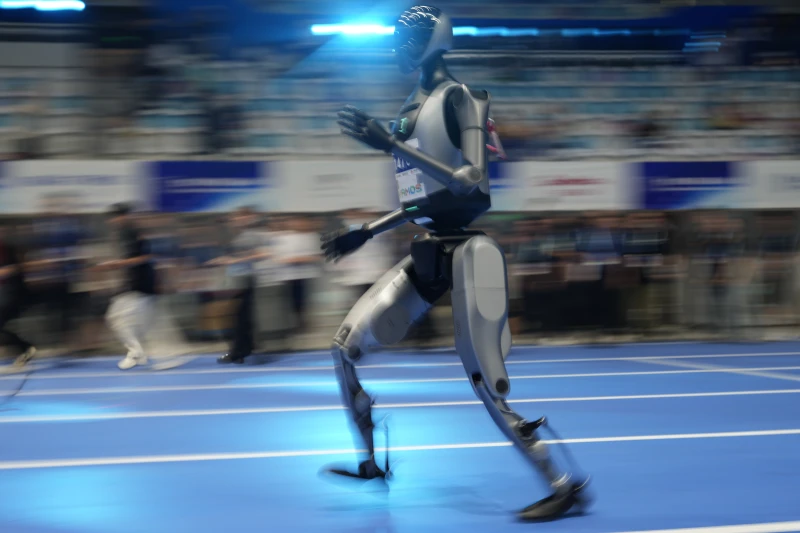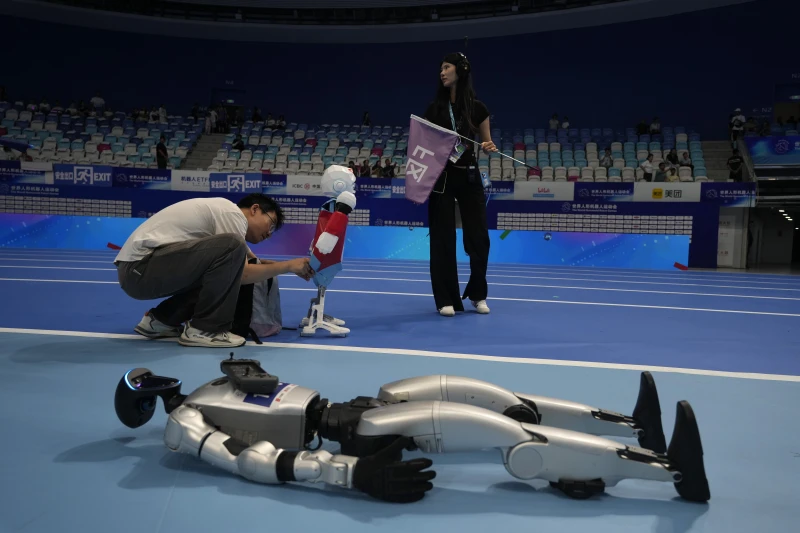Beijing just hosted the first-ever World Humanoid Robot Games—a three-day event packed with walking, running, soccer-playing, and martial arts-performing robots. More than 500 robots from 280 teams across 16 countries showed up. The event was part show, part tech demo, and a clear sign of China’s push to lead in robotics and AI. But while the tech was impressive, the gaps between robots and real humans were still obvious.
Robots Take the Stage
This wasn’t about perfect performance. It was about showing how far humanoid robots have come—and how far they still have to go. A few machines handled footraces and boxing matches surprisingly well. Others stalled out or toppled halfway through. In soccer, 3-on-3 games were total chaos, with machines colliding and falling all over the place. But when a robot finally scored, the stadium exploded.

Beyond Sports: Practical Applications
The Games also tested what robots might do off the field. Some were put to work cleaning hotel rooms, sorting deliveries, or handling luggage. A few did fine—one cleaned a space in just over eight minutes. Others took forever or barely functioned.
That mix of results says a lot. The tech is moving, but it’s uneven. Some robots are close to being useful. Others still struggle with basic tasks. The message was clear: we’re not there yet, but we’re getting closer.
For China, that’s the whole point. Hosting a global competition like this is about showing off and speeding up. Beijing wants to be seen as a hub for robotics and AI, not just cheap manufacturing. Officials hope this will draw more talent, more investment, and more serious attention to the field.
Still, experts aren’t sold on the hype. Controlled demos don’t reflect messy, real-world jobs. A robot might deliver a suitcase in a lab. On a crowded sidewalk? That’s a different story. The Games showed real progress, but also real limits.
The Future of Humanoids
For the teams involved, the Games were more about sharing than winning. Engineers from universities, startups, and labs brought all kinds of designs—some sleek and fast, others basic and budget-friendly. Some were built with 3D-printed parts to cut costs. Others focused on endurance and lifelike movement.
Spectators got a rare, up-close look at where robotics is going. Kids cheered. Engineers took notes. And the public got to see robots doing more than just lifting boxes—they danced, they crashed, they entertained.
For China, this wasn’t just about robots. It was about showing leadership in a field that could reshape daily life. The country’s putting big money into AI and automation, and this event made that ambition loud and clear.
Still, big questions remain. Can humanoids become everyday tools, not just showpieces? Will they ever be reliable caregivers, workers, or helpers? Or are we decades away from that kind of leap?
The robots in Beijing gave a glimpse of both futures. One moment, they wowed the crowd. The next, they froze mid-step. That’s where the field is now—halfway between possibility and reality.
In the end, the World Humanoid Robot Games weren’t really about winners or losers. They were about where the tech is, what still needs fixing, and what might be coming soon. For the public, it was fun to watch. For developers, it was a reality check.
If these Games push things forward—whether in labs or in public imagination—they might be remembered as the spark that brought humanoid robots a little closer to real life. But for now, it’s still a work in progress.









